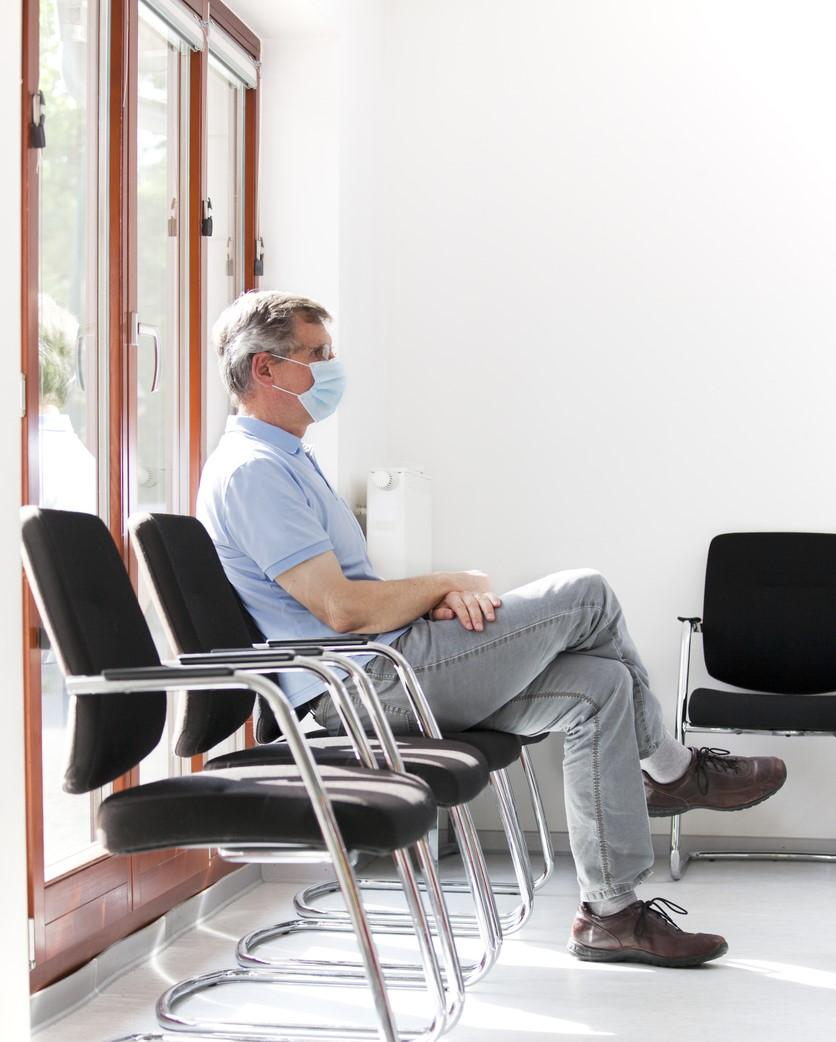A study of US veterans finds that healthcare visits rose significantly in the month after COVID-19 infection and then leveled off but remained higher than those of their uninfected peers through 1 year.
The Veterans Affairs (VA) Health Care System–led study, published today in JAMA Network Open, matched 202,803 COVID-infected veterans with the same number of uninfected veterans to track primary care, specialty care, surgery, mental health, emergency, and diagnostic and/or other visits from January 2019 to December 2022.
The average veteran age was 60.5 years, and 88.1% were men. The team obtained data from the VA Corporate Data Warehouse and the Centers for Medicare & Medicaid Services Fee-for-Service Carrier/Physician Supplier file for the year before and after COVID-19 infection.
Increase mainly driven by primary care
In the year before infection, rates of outpatient healthcare visits were similar in the two groups (0.70 and 0.65 visits per week in the infected and uninfected groups, respectively). The week of infection, healthcare visits increased (4.02 vs 0.65 visits the previous week), with attenuation after the first month post-infection (from 0.83 to 0.66 visits).
Outpatient healthcare visits of all types except for surgery were higher among infected veterans than among their uninfected counterparts, with an increase of 5.12 per 30 days, mainly due to primary care visits (increase of 1.86 visits per 30 days). The difference fell to 0.58 visits per 30 days but remained significantly higher during 184 to 365 days post-infection (increase of 0.25 visits per 30 days).
Visit increases for infected veterans were seen for in-person specialty care (0.74 more visits; 0.59 in person) and emergency care (0.73; 0.72 in person), but not for telehealth, the month following infection. But visit increases did occur in telehealth for primary, mental health, and other care the month after infection, an increase that persisted.
A total of 1.86 more primary care visits occurred the month after infection, with 1.32 of these visits through telehealth. Overall 0.19 more mental health visits were observed 1 month post-infection, 0.11 of them via telehealth.
Half of visits via telehealth over 1 year
Over the full year post-COVID, infected veterans had 9.59 more visits than those who were still uninfected during that time. Half of the increased visits took place via telehealth. The increase was highest for veterans aged 85 years and older (6.1 visits), compared with those aged 20 to 44 (4.8 visits), and unvaccinated participants (4.5 visits), compared with their vaccinated peers (3.2 visits).
The adverse health outcomes of COVID-19 infection translated into increased use of outpatient services for up to 12 months after infection, suggesting persistent effects of post–COVID-19 conditions.
The greatest effects of infection on visits occurred in the first pandemic wave (March to May 2020; 5.8 visits) and were still evident during the second wave (June to October 2020; 4.7 visits) and third wave (November 2020 to May 2021; 3.6 visits).
"The adverse health outcomes of COVID-19 infection translated into increased use of outpatient services for up to 12 months after infection, suggesting persistent effects of post–COVID-19 conditions," the study authors wrote. "The increased telehealth use for primary care and mental health care has been sustained since 2022, suggesting that the pandemic induced a modality switch for certain care types that may be more patient centered and clinically appropriate for patients with an infectious disease."
They called for future research into the degree to which the persistent increase in telehealth visits reflects patient preferences, healthcare provider– or health-system change in the delivery of care, or other factors. "These results reinforce the value in determining which types of care may be equally effective when delivered by telehealth and which types of care are best delivered in person," they wrote.




















